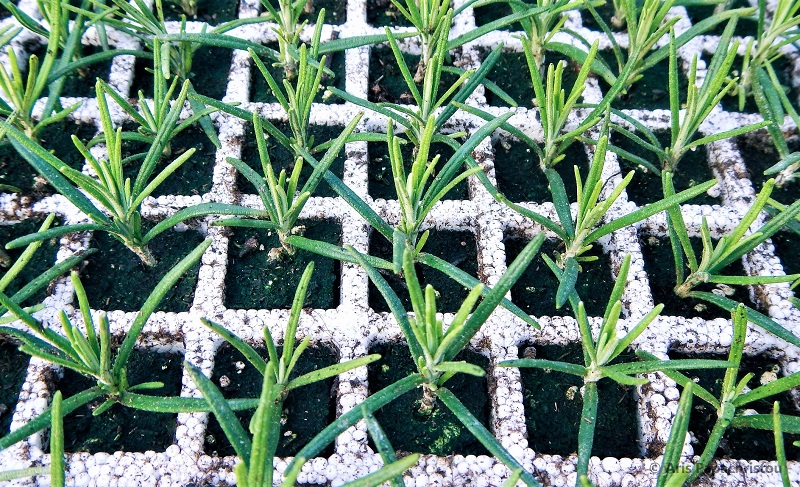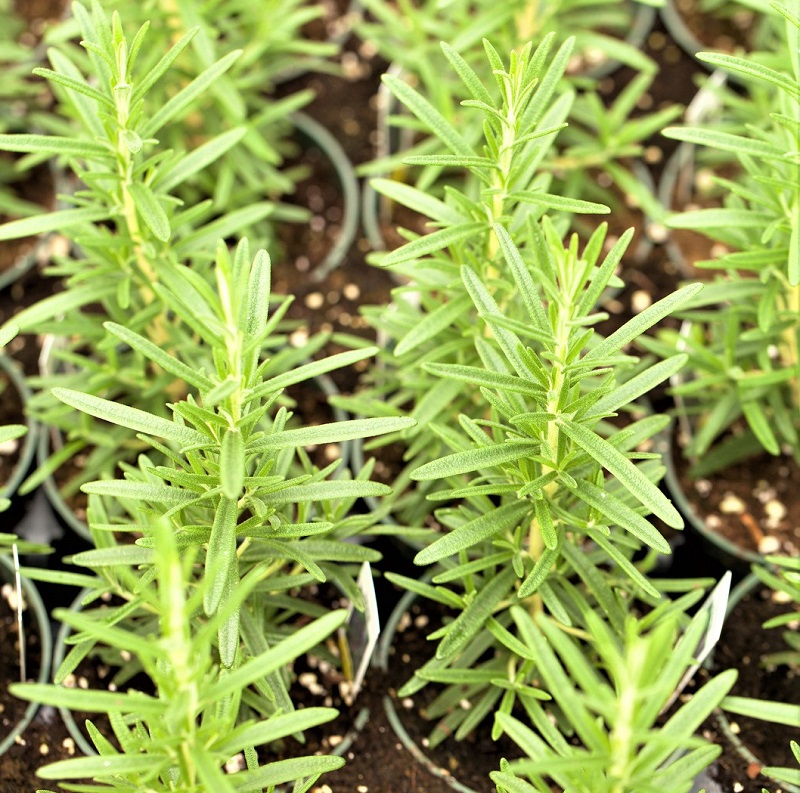Last Updated on September 13, 2024 by teamobn
In the grand scheme of things, the home gardener’s goals are humble. The world won’t end if the raspberry bushes are not pruned on schedule, though it will be a tad better if they are. There is no crime in growing too many lettuce seedlings, even if your time could be spent more wisely. Yet even the experienced gardener will tell you that growing rosemary requires levels of patience, determination, and focus that verge on the heroic.
With its fresh, woodsy fragrance, rosemary is bound to please dinner guests. Fortunately for gardeners, with a bit of tenacity and tender care, you can grow rosemary plants in a container out on the patio.
True, this herb requires more in the way of maintenance and gardening diligence than others. But the culinary value of fresh rosemary, lovingly grown and husbanded, is by far worth the trouble. Rosemary, after all, is no ordinary herb.

No Ordinary Herb
Contents
Rosemary grows best when allowed eight hours of sunlight a day. Due to its extensive root system, select a container that will accommodate at least three gallons of potting mix. Consider containers made of clay or wood. These will provide better oxygenation than plastic pots. Good oxygenation reduces the risk of root rot.
Basil, cilantro, and parsley will all readily sprout from seed and grow quickly. This is not the case with rosemary. This difficult evergreen can cause the gardener a good deal of frustration between its low germination rate and problematic seedling care. That’s why experts recommend that you start your rosemary from cuttings.
Making Your Own Rosemary Cuttings
Cuttings are basically a branch of new growth snipped from a living specimen that the gardener allows to root, thus creating a new plant. Growing rosemary from cuttings permits quicker, more consistent plant development. Follow the steps below to make cuttings of your own.
Find a donor rosemary plant and snip a three-to-four-inch piece of new growth. Strip off the leaves on the bottom two inches of the cutting and then plant it in moist potting soil. Be sure to keep the soil moist even as you allow the plant adequate sunlight over the next few weeks. The cutting should grow roots within 20 to 30 days.

Selecting a Growing Medium
The herb is fussy when it comes to the medium in which it grows. The plant requires potting soil that will not only provide adequate nutrition, but also excellent drainage. When you visiting your neighborhood garden center, look for potting soils high in composted organics, but also heavily amended with perlite or vermiculite. Any of these commercial mixes should suffice.

Planting Rosemary Outdoors in a Container
You can plant rosemary outdoors in containers around the time of the average last frost. Fill the container with potting soil and plant the rosemary cutting right in the center. Gently pack down the soil and water the plant vigorously. Place the rosemary container in an area that will receive at least six full hours of direct sunlight a day.

Keeping Your Rosemary Alive and Thriving
Water your rosemary thoroughly once the top inch of soil dries. The standard expert advice is to water thoroughly, then let the soil dry out. If watering floods the container, pour the excess into a neighboring plant’s pot. Overwatering rosemary can lead to root rot and then sudden death.
Beyond watering, feed your plant some well-diluted liquid seaweed fertilizer or fish emulsion every few weeks. This will help rosemary generate long, somewhat spindly new growth. These should be soft and tender enough to eat raw in salads.

Overwintering Rosemary Indoors
Your rosemary plant will constantly remind you how much it prefers the winter conditions of the Mediterranean over those of your apartment or patio. See how long you can keep the plant safely outside. This may require bringing the pot indoors on especially cold nights. Many gardeners have kept a single pot of rosemary alive for many years this way.
Rosemary is not only perennial but also evergreen. It can stay outdoors in a pot for as long as temperatures don’t drop below 20°C. Otherwise, it must come inside for the months of serious cold. Find a cool indoor area exposed to as much sunlight as possible during the day.

Harvesting Rosemary
You can harvest fresh rosemary throughout the season. For the best flavor and aroma, plan to harvest your rosemary plants in the early morning. That is when the essential oil concentrations in the foliage are at their highest. To harvest, simply snip off the new growth.
If the leaves turn yellow at its base, your rosemary plant is probably root-bound. Repot in a container three or four inches larger. If leaf tips turn brown, or if leaves begin to fall off, you are overwatering.
The tips above should help you on your way to growing rosemary in containers. Bring your rosemary indoors when the weather gets too cold. Other than that, just stick close to your watering regimen and you’ll be able to harvest fresh rosemary in abundance. Your dinner guests will surely thank you for it.








